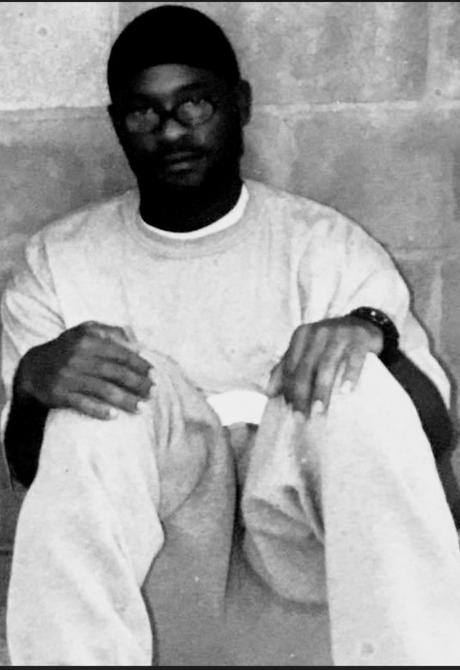David Black has now spent a full quarter century in federal prison for a crime he did not commit.
On a cool Sunday afternoon in February of 1997, an elderly Chinese-American woman was gunned down on the 400 block of K Street in Washington DC. Alice Chow lived in the Museum Square One apartment building, a low-income complex at 401 K Street that, at the time, housed a population that was 75% Chinese American and 25% African American. Alice Chow’s tragic death shocked the community and the police, who had one of the lowest homicide closure rates in the nation, were under intense pressure to find the killer.
Unable to believe that anyone would intentionally murder a highly respected model citizen in broad daylight, the police immediately assumed that she was felled by a stray bullet. Several street witnesses were startled by the sound of gunfire, but no one saw the shooter. As you would expect, several people ran for cover in the seconds following the shooting. On the day of the crime, the police had already decided that one of those runners was fleeing the gunman.
Two witnesses were eventually found. One man was on the run from the police, and was in the Museum Square apartment building illegally. He claimed to have witnessed the shooting from a hallway window and insisted that his girlfriend had witnessed the same event. For weeks, she denied it. But after a brutal two-day interrogation, she finally agreed to cooperate. Then, on the verge of trial, she recanted her testimony.
The male witness admitted on the witness stand that he hadn’t witnessed the shooting, but, threatened with a perjury indictment, he returned to his original story.
Grand jury testimony suggests that David Black became part of the story by accident. The male witness claimed that the shooter was driving a blue car. When the police asked a person from the neighborhood if he knew anyone who drove a blue car, he mentioned a person who went by the street name “Black”. David had no idea how he came to be implicated in the killing of Alice Chow since, at the time of the tragic incident, he was attending his sister’s birthday party.
Several months ago, Friends of Justice received the following email from David Black:
My name is David Black, reg. # 09248007. I’m an inmate, convicted in Washington DC. I’m being housed at the Canaan federal penitentiary in Waymart, Pennsylvania. I’ve been locked up since March 27, 1997 with a sentence of fifty years to life. I am an innocent man, wrongfully convicted of a crime that I did not commit. I had nothing to do with the crime. I was not on the scene when the crime was committed. And the detectives working with the Metropolitan Police Department knew this. At least, they would have known if they had been paying attention to the facts.
My trial was messed up. I was railroaded from beginning to end.I don’t want you to think that I am just another person trying to find a way out of a crime he committed. I just need someone with the necessary resources to take a careful look at my case. If you do even a little investigation you will discover that a grave injustice has been done to me.
You have probably heard of the hundreds of innocent people that have been exonerated after serving decades for crimes they didn’t commit. I am one of those people. There was no DNA, gun or other physical evidence introduced in my case. That is because you can’t use that kind of evidence against an innocent person.So, how was I convicted? The prosecutor found two people who were willing to tell a grand jury that they had seen me committing the crime. During my trial, both witnesses admitted under oath that they had not witnessed the shooting. But the prosecutor impeached his own witnesses with their own grand jury testimony. The jury realized that there was something terribly wrong with this case. During their deliberations, they sent three notes to the judge. One note asked for instruction on witness credibility. Another note asked for a definition of “reasonable doubt”. The third note announced that they jury was hopelessly deadlocked. Still, in the end, they voted to convict.I was born and raised in the Sursum Corda neighborhood of DC, and all my neighbors know I did not commit this terrible crime. I know you may not believe me right now. All I’m asking is that you take a look at the facts and make up your own mind.
Having read through the trial transcripts, grand jury testimony and other legal materials Mr. Black supplied to us, we wholeheartedly concur with Black’s assessment. It isn’t just that we believe there is reasonable doubt in this case; we have concluded that the government’s theory of the crime is riddled with impossibilities and internal contradiction. The crime, as laid out by the lead detective and the prosecutor is simply impossible.
 The Canaan Federal Prison where David Black is incarcerated
The Canaan Federal Prison where David Black is incarceratedThe government induced two deeply flawed and highly vulnerable people to tell convenient lies. The prosecutor knew, or should have known, that his witnesses were not credible under oath, but was unable to acknowledge the obvious.
In 1997, and still today, Mr. Black’s Sursum Corda neighborhood was a difficult place to grow up. Crime rates were high. Unemployment figures were through the roof. Drug abuse had reached epidemic proportions. Not surprisingly, David dropped out of school without completing high school and spent most of his time on the streets. Many of the persons exonerated across America in recent years share this profile.
 David Black
David BlackAccording to the National Registry of Exonerations, there have 2,551 known exonerations in the United States since 1989. An additional 1,800 defendants have been cleared in 15 large-scale police scandals in which police officers framed innocent defendants. But experts agree that these figures represent the tip of a much larger iceberg. For every innocent person that walks free, a dozen more languish behind bars.
The leading cause of exoneration, involving 72% of wrongful conviction cases, is mistaken eyewitness identification. But when eyewitnesses make mistakes, it is typically because, often unbeknownst to juries, investigators have been manipulating the identification process in subtle, and not-so-subtle ways. This is called police-generated testimony. And if you want to understand how police-generated testimony works, the tragedy of David Black is exhibit A.
I am not suggesting that most of the people locked up in America are innocent. Most crimes involve little guess work. Evidence of guilt is typically so overwhelming that only three percent of state cases, and two percent of federal cases, make it to trial. Most are settled by plea bargain.
And of the cases that do go to trial, few end well for the defendant. In the federal system, only 2% of defendants are acquitted. These odds are so daunting that some innocent people take a plea offer because they don’t like their chances at trial. Still, the vast majority of criminal defendants are guilty as charged and everybody knows it.
But what about the small percentage of cases where the facts are in dispute? What happens when the prosecution and the defense can argue the facts with equal facility? In theory, cases like that should never go to trial. Guilt must, after all, be proven beyond a reasonable doubt.
In reality, it isn’t so simple. Especially when we consider tragic crimes of violence involving innocent victims. What happens when the evidence is muddled and a jury must decide between convicting an innocent person and putting a dangerous killer back on the street? They will vote to convict. Almost every time.
The two witnesses that sent David Black to prison were ridiculously, even grotesquely unreliable. If they were in a movie, their performance, in and out of court, would make for high comedy. But there is nothing funny about an innocent man spending twenty-five years in prison.
The “evidence” used to convict Mr. Black was placed in the mouths of uncooperative witnesses, but, as we shall see, it was generated by the police in every detail.
David Black may have come up on the streets of the nation’s Capital, but he has grown into a resilient, determined, principled fifty-two-year-old man dedicated to proving his innocence.
To date, we have produced four segments of the David Black story, with several more to come. Please give David’s story the attention it deserves.
- The David Black Story: An Introduction
- Gaslighting: The David Black Story (part four)
- An easy game to play: The David Black Story (part three)
- A Spotted or Herbaceous Backson: The David Black Story (Part Two)
- Six Impossible things before breakfast: The David Black Story, (part 1)
